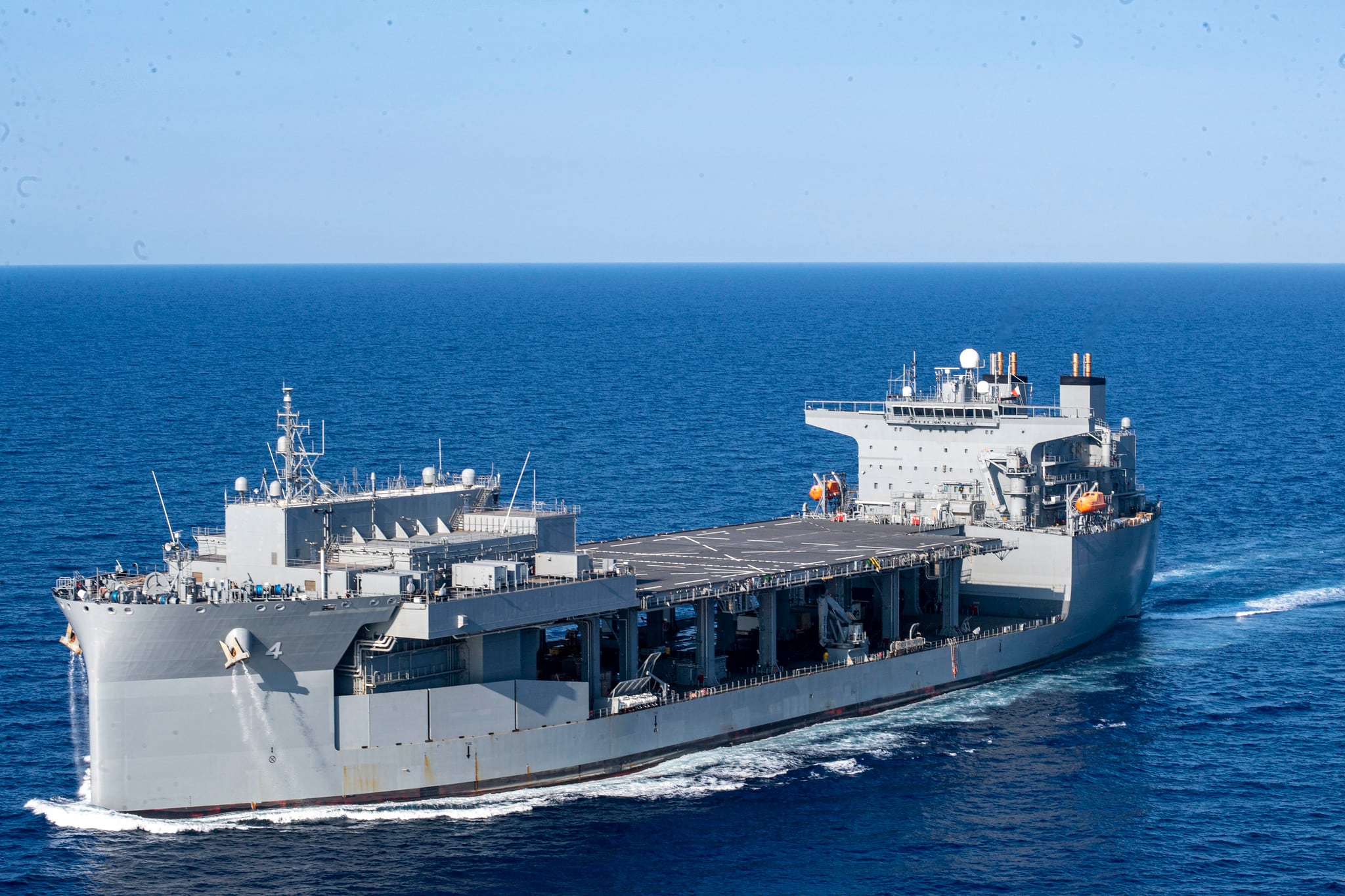Marine Gunnery Sgt. John L. Canley fought off multiple attacks as his company moved into Hue City, the heaviest of urban fighting the Corps would see in Vietnam.
After his commanding officer was severely wounded he took command and led the company into that hellscape. Over three days Canley led attacks on multiple fortified positions, exposing himself repeatedly to enemy fire while carrying wounded Marines to safety.
In 2018, a half-century after those fateful days in 1968, Canley, then a retired sergeant major, was awarded the Medal of Honor.
Marines headed to battle in the near future will carry his name with them as the Navy announced in mid-November that an Expeditionary Sea Base-6, or ESB-6, class ship will be named in his honor.
“Sgt. Maj. Canley embodies the spirit of honor, courage and commitment,” Commandant of the Marine Corps Gen. David H. Berger said in a press release. “Sgt. Maj. Canley represents a generation of Marines who have sacrificed and fought for our way of life. His actions in Vietnam forever changed the lives of so many Marines around him. His legacy will continue to live on.”
The ESB ship class is used through a range of military operations supporting multiple operational phases, similar to the Expeditionary Transfer Dock (ESD) class.
As a mobile sea base, the ships are part of the critical access infrastructure that supports the deployment of forces and supplies to provide prepositioned equipment and sustainment with flexible distribution, according to a Navy statement.
Secretary of the Navy Kenneth J. Braithwaite announced the naming honor Tuesday, Nov. 10, on the Marine Corps' birthday.

“ESB vessels will deploy Marines of the future carrying the name of Marines of the past,” said Braithwaite. “They are leaders who truly embodies our core values of honor, courage and commitment, and the future crew of USS John L. Canley, both sailors and Marines, will carry on his legacy, character and professionalism throughout the lifespan of this vessel.”
Canley’s honor resides in good company. The Navy has named three other ESBs for legendary Marines.
Those include the USS Lewis B. Puller, ESB 3, named for the late Lt. Gen. Lewis Burwell “Chesty” Puller, who fought in engagements from counter-guerilla campaigns in the early 20th century to leading troops in iconic fights such as the Battle of Chosin Reservoir in the Korean War.
Puller was awarded the Navy Cross five times in his career along with the Bronze and Silver Star medals and other valor decorations.
ESB 4 was named for retired Chief Warrant Officer 4 Hershel W. “Woody” Williams, who received the Medal of Honor for his actions during the Battle of Iwo Jima in World War II.
Then-Cpl. Williams landed with his fellow Marines on Iwo Jima on Feb. 21, 1945. In two days of fighting his unit was pinned down and he and other Marines fought their way to an enemy pillbox, improvising a weapon using an explosive charge attached to a pole to reach the pillbox opening.
Everyone in the group except Williams was wounded or killed as the advanced on the position.
Williams arrived at the pillbox, shoved a flamethrower inside the opening and killed all of the enemy soldiers inside. He then returned to his comrades, refueled the flamethrower and went on to destroy multiple remaining enemy pillboxes.
And finally, ESB 5 was recently named for the late Lance Cpl. Miguel Keith.
Keith was awarded the Medal of Honor for actions he took on May 8, 1970, in the Quang Ngai Province of South Vietnam.
Though seriously wounded during a heavy ground attack by an enemy force that outnumbered his platoon, Keith ran across “fire-swept terrain to check the security of vital defense positions and then, while completely exposed to view, proceeded to deliver a hail of devastating machine gun fire against the enemy.”
He rushed forward against five advancing enemy soldiers, firing as he went.
He killed three of the five and the other two dispersed during his withering attack.
But, a grenade detonated near him, further injuring Keith.
Keith continued to brave enemy fire, again charging, this time against an estimated 25 soldiers massing to attack.
He killed four of the 25, forcing the rest to flee for cover. During the firefight Keith was mortally wounded.
Todd South has written about crime, courts, government and the military for multiple publications since 2004 and was named a 2014 Pulitzer finalist for a co-written project on witness intimidation. Todd is a Marine veteran of the Iraq War.



